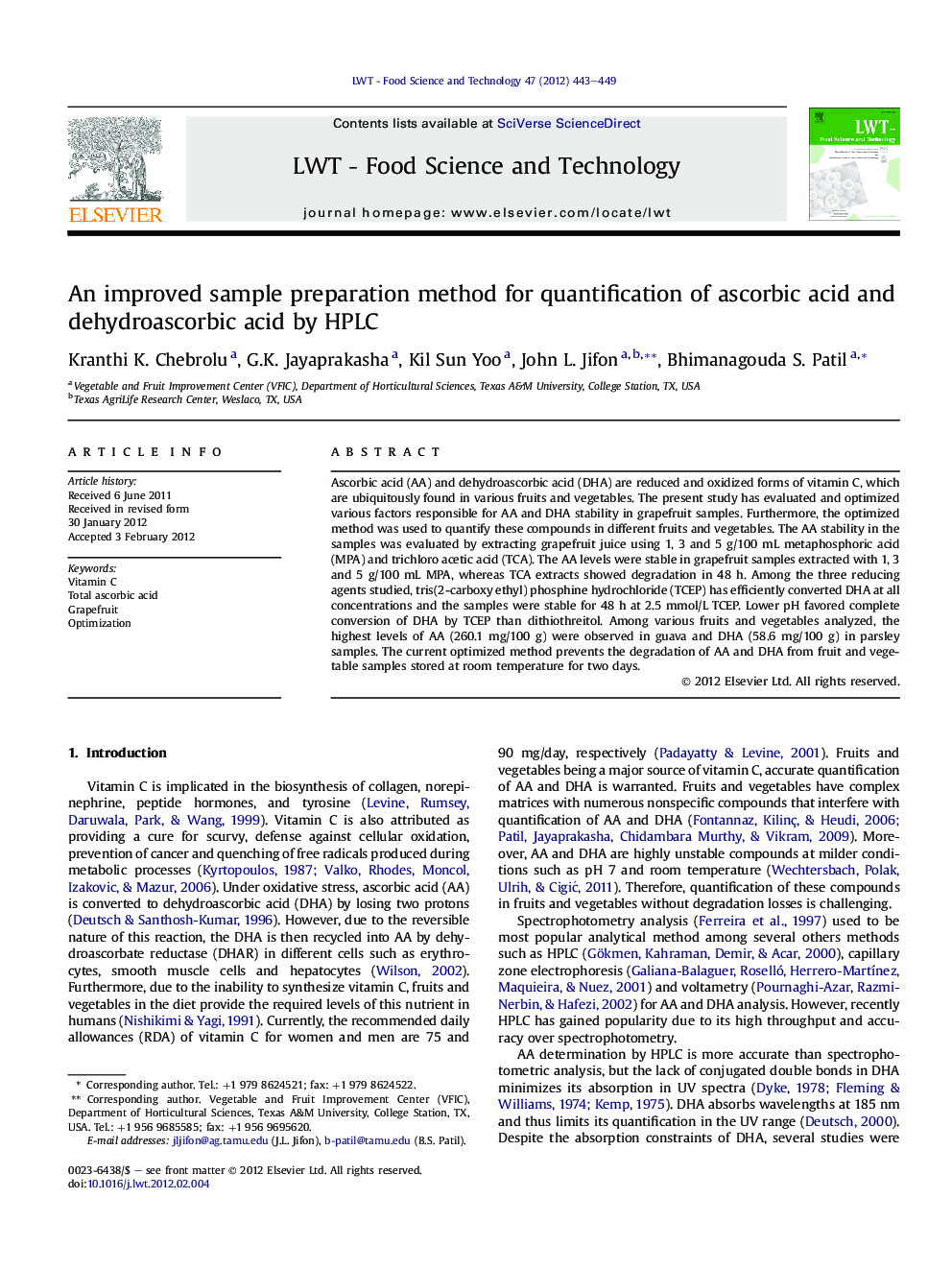| Article ID | Journal | Published Year | Pages | File Type |
|---|---|---|---|---|
| 6405587 | LWT - Food Science and Technology | 2012 | 7 Pages |
Ascorbic acid (AA) and dehydroascorbic acid (DHA) are reduced and oxidized forms of vitamin C, which are ubiquitously found in various fruits and vegetables. The present study has evaluated and optimized various factors responsible for AA and DHA stability in grapefruit samples. Furthermore, the optimized method was used to quantify these compounds in different fruits and vegetables. The AA stability in the samples was evaluated by extracting grapefruit juice using 1, 3 and 5 g/100 mL metaphosphoric acid (MPA) and trichloro acetic acid (TCA). The AA levels were stable in grapefruit samples extracted with 1, 3 and 5 g/100 mL MPA, whereas TCA extracts showed degradation in 48 h. Among the three reducing agents studied, tris(2-carboxy ethyl) phosphine hydrochloride (TCEP) has efficiently converted DHA at all concentrations and the samples were stable for 48 h at 2.5 mmol/L TCEP. Lower pH favored complete conversion of DHA by TCEP than dithiothreitol. Among various fruits and vegetables analyzed, the highest levels of AA (260.1 mg/100 g) were observed in guava and DHA (58.6 mg/100 g) in parsley samples. The current optimized method prevents the degradation of AA and DHA from fruit and vegetable samples stored at room temperature for two days.
⺠Sample preparation for total ascorbic acid was optimized in grapefruit samples. ⺠Suitable solvents were selected for ascorbic acid (AA) extraction and stability. ⺠Best reducing agent conditions were optimized for dehydroascorbic acid analysis. ⺠The developed method was used to quantify total AA in fruits and vegetables.
